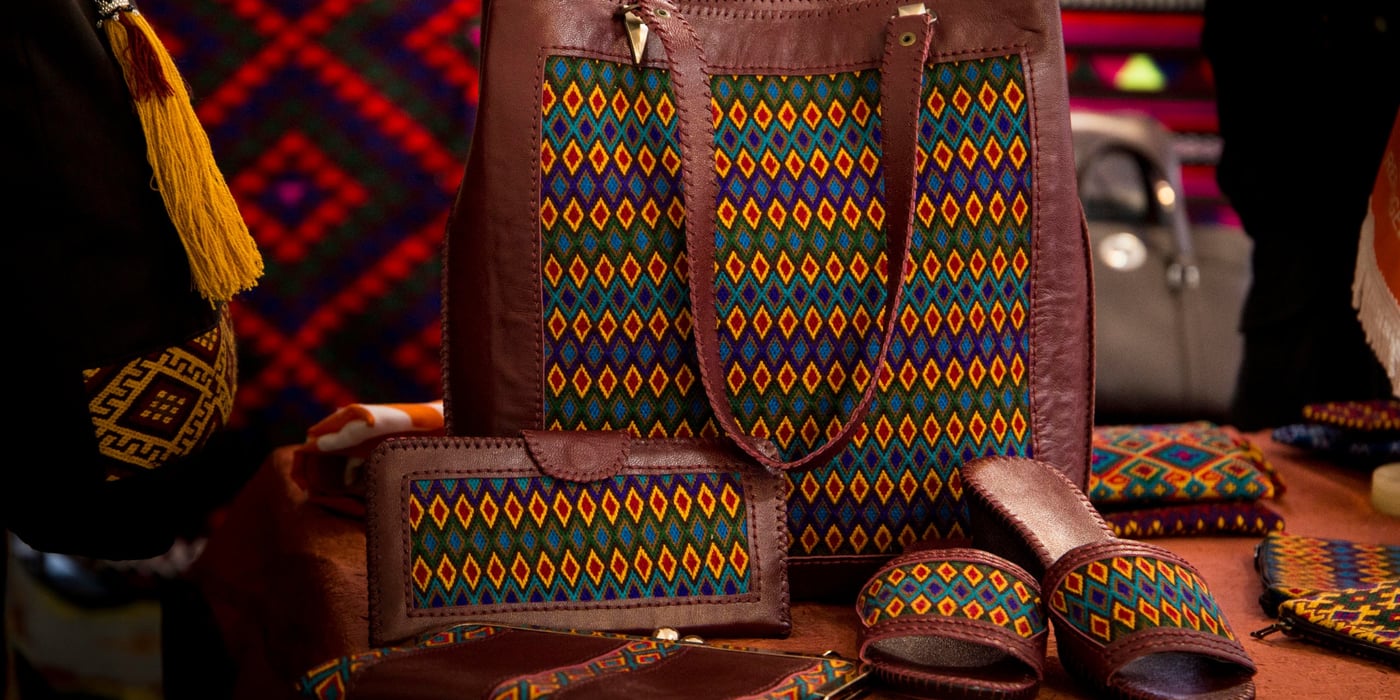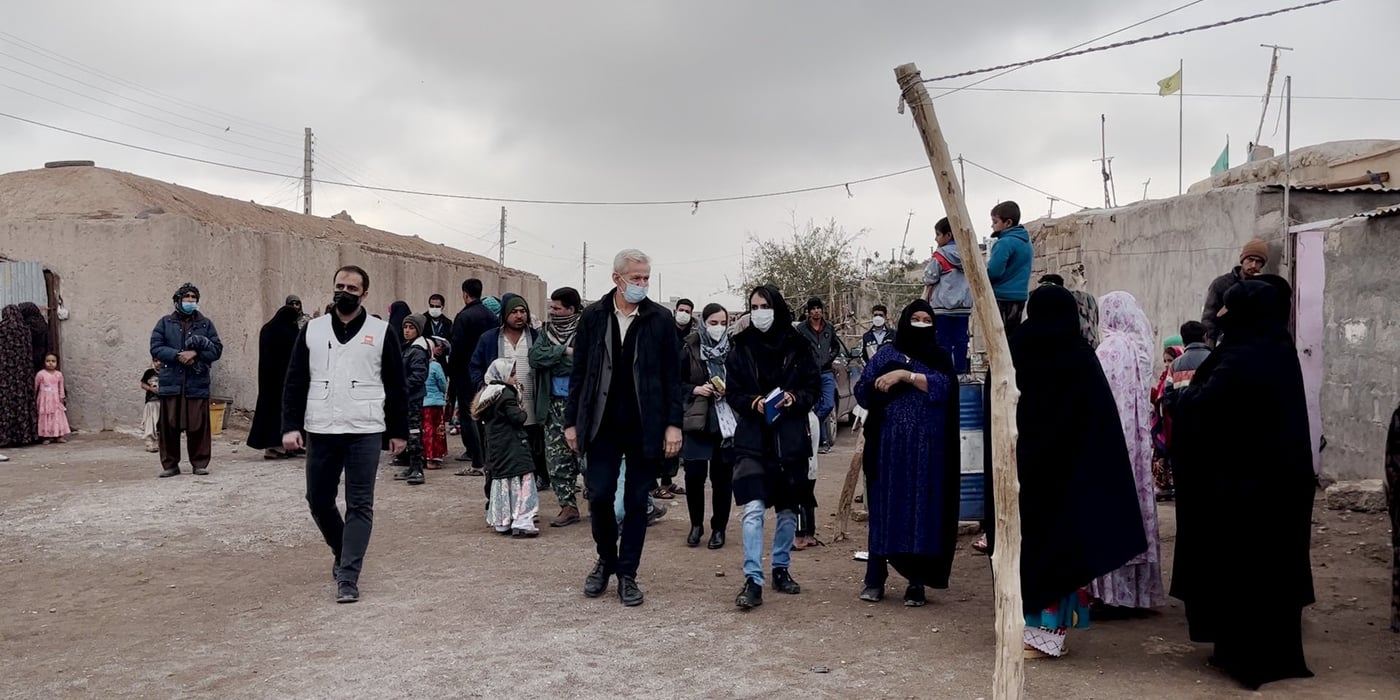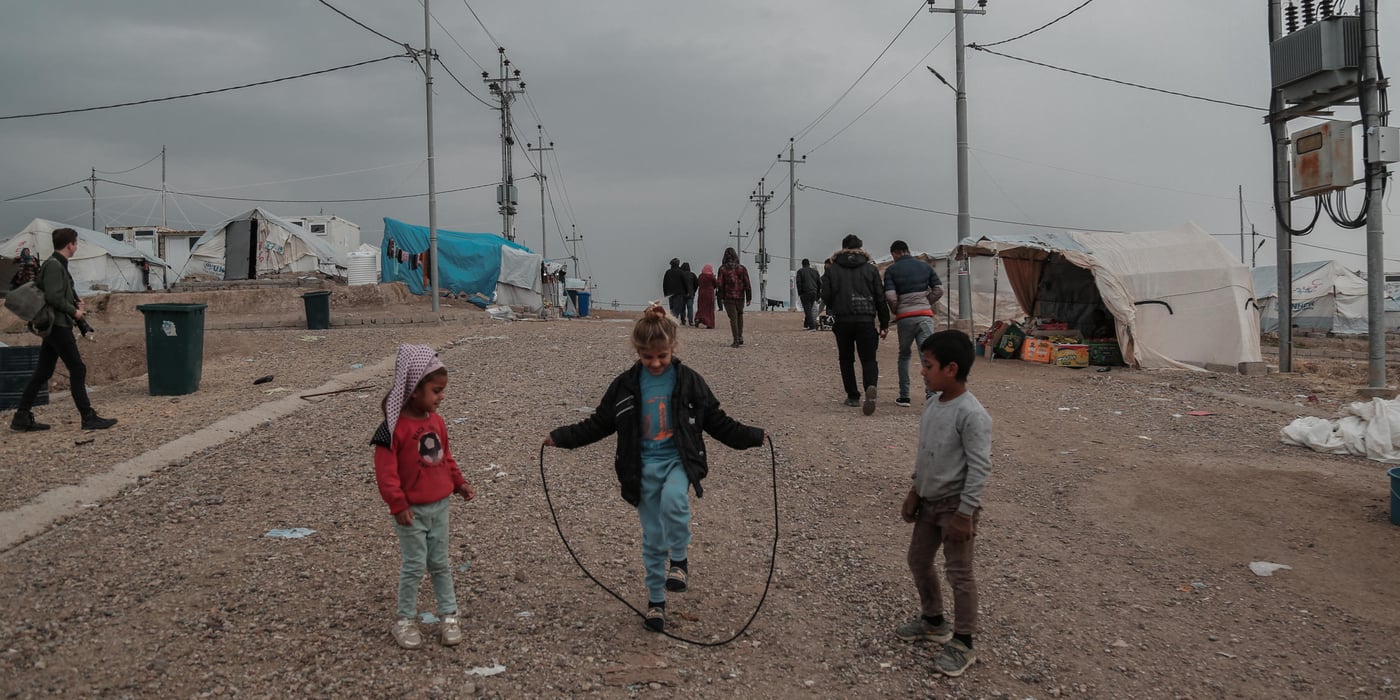
At 19, she is one of 15 trainees who attended and completed one of the tailoring workshops in Iran’s south-eastern province of Kerman that our country team organised in partnership with the Technical and Vocational Training Organization (TVTO). Pari is now a certified seamstress and, along with others, exhibited her work at the Islamic Unity Week exhibition where the group launched their new brand Zarghuna.
Pari and most of the group are second or even third generation Afghans born in Iran. Their parents fled the conflict in Afghanistan over three decades ago never to return.
A hard-working community
Pari’s fellow trainee, Parastou, 21, is also enthusiastic about taking part in the exhibition. “I’m very happy with the quality of our work. I’m really optimistic about the journey ahead, and I’m very proud of our brand”.
Since 2014, the Norwegian Refugee Council (NRC) has partnered with TVTO to deliver tailoring workshops for Afghan women living in an informal settlement on the outskirts of Kerman city.
The area has been named Dasht-e-Zahmatkeshan meaning "the field of hard workers". Originally emerging from a hardworking community created around brick factories, it had little to offer the young women living there. When we first advertised our workshops, a group of women from the community registered to take part in the pattern making, cutting and dressmaking courses. This initiative aimed to generate income for Afghan women aged between 17 and 30 and to create opportunities for them with their new skills. Many walked an hour or longer to participate in the workshops.

Keeping traditional skills alive
When we first began, we conducted an assessment among the women to find out what skills they already had and how we could assist in their further development. As a result, we came to know about a traditional embroidery skill called Shesh Tareh Douzi, a needlework art technique which is passed on within Afghan communities particularly by Pashtun elder women to youth. It is specifically used for dowry embroidery.
Although the art is not exclusive to Afghans, the patterns and colours they use are quite specific to them. To build on this and make sure the products are marketable, we reached out to the TVTO workshop trainer to provide guidance and advice to the trainees on how to try out different patterns that had not been done before.
While a permanent display area has already been set up for the women’s artwork in the Community Centre in Dasht-e-Zahmatkeshan, we wanted to introduce the new brand to a wider audience. The next step was to showcase their talents on a broader scale beyond their own community.
Zarghuna brand is born
Derived from a Pashtun feminine name, Zarghuna means green, light and hope.
The exhibition, which was part of a nationwide annual festival celebrating the unity among Muslim Shias and Sunni populations in Iran, was a perfect forum to bring together Iranian and Afghan members of the community. At these events, exhibitors present a wide range of products from traditional food to handicraft and artwork for the participants to enjoy and learn about.
Stronger than before
Three women, representing the entire group, travelled with us to Kerman city to set up the Zarghuna stall. The fusion artwork on display generated a lot of attention from the general public and high-level government officials alike. For these women, the opportunity to participate in the exhibition and to receive positive feedback for their work, had a significant impact on their confidence.
"I feel we’re leaving this exhibition much stronger than when we came here," says Somayeh, 20. "It’s exciting that we already have to think about taking Zarghuna to the next one."




